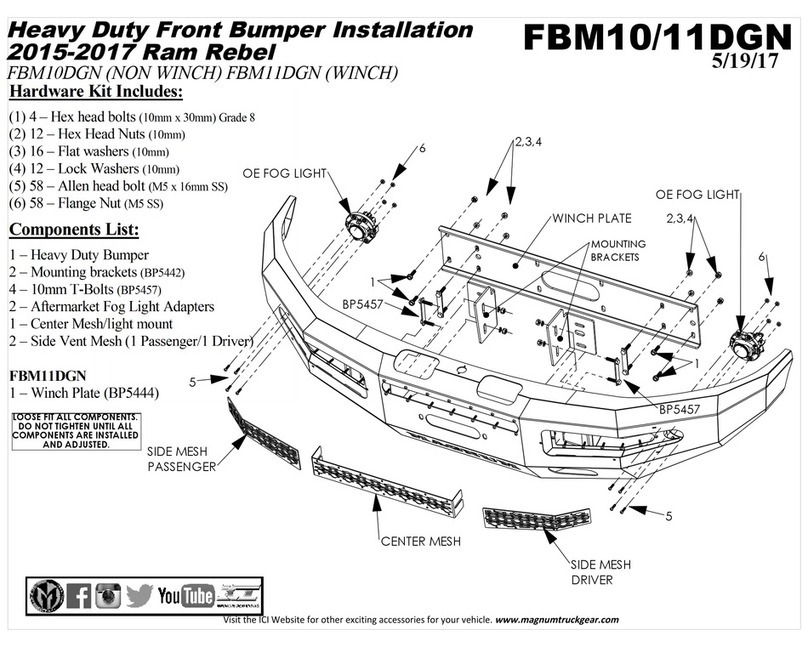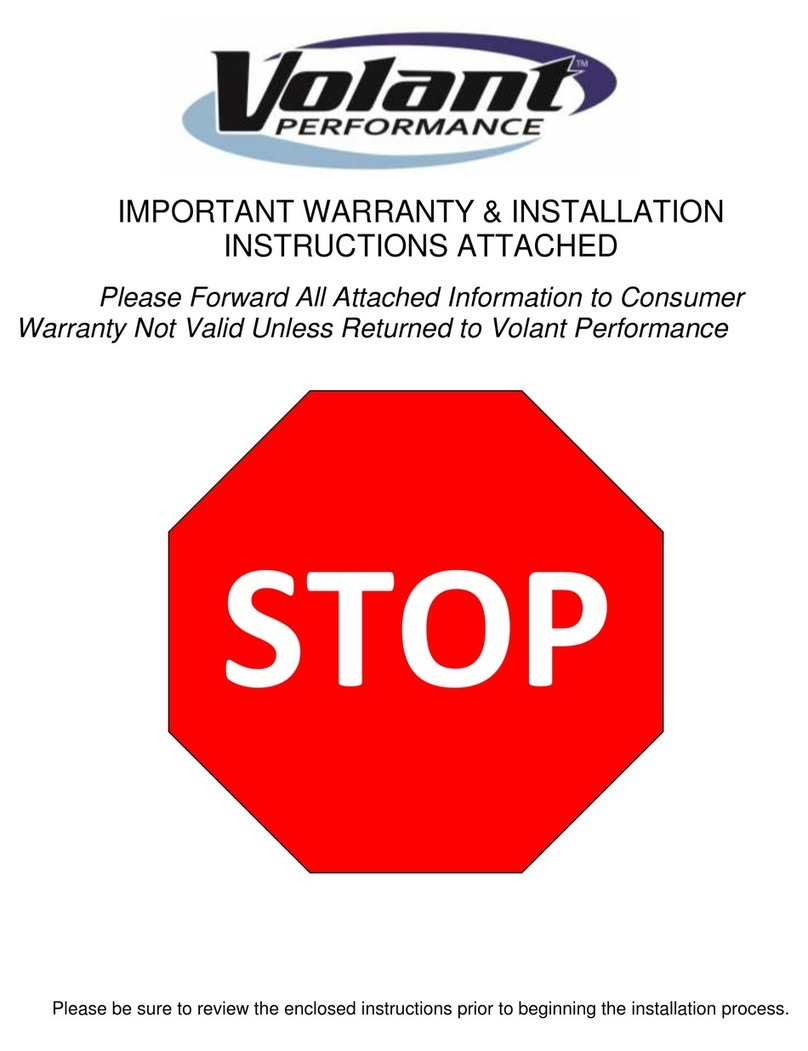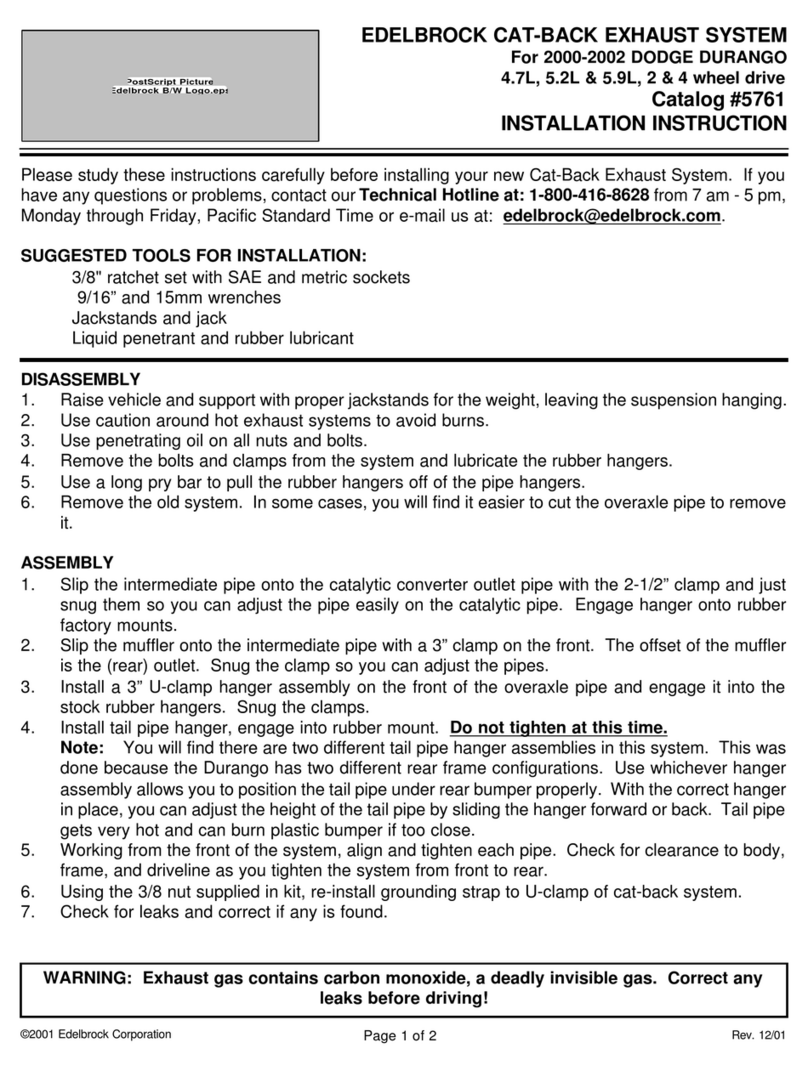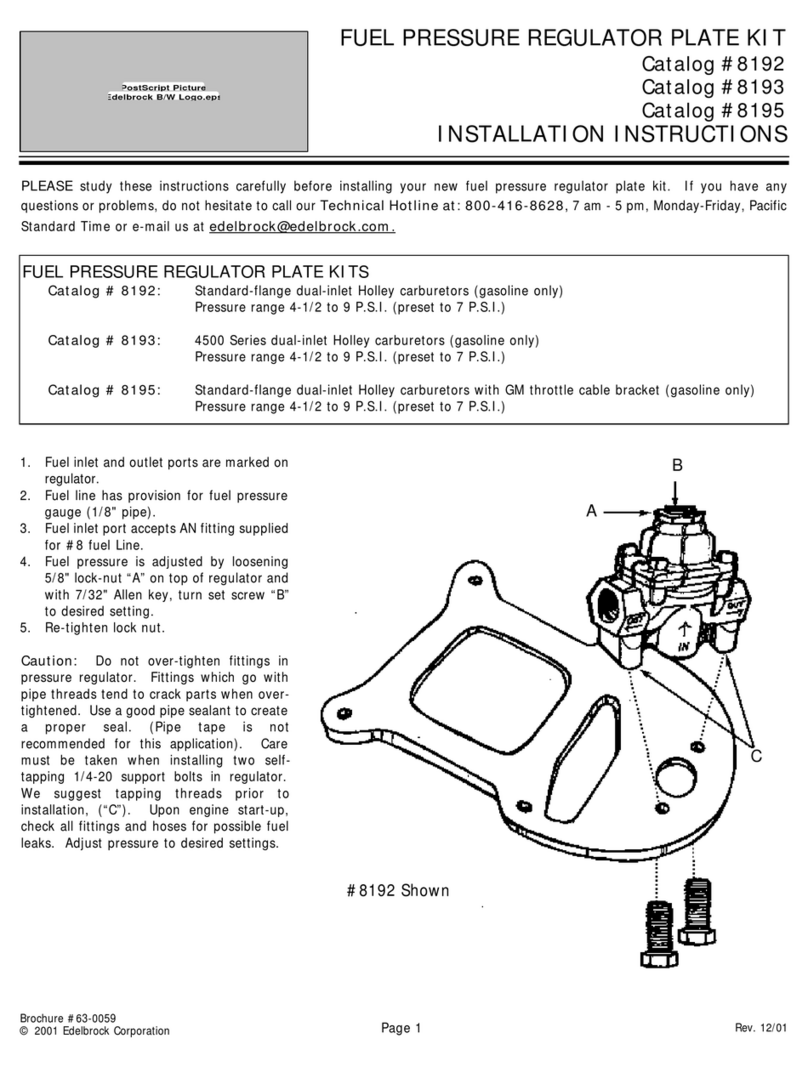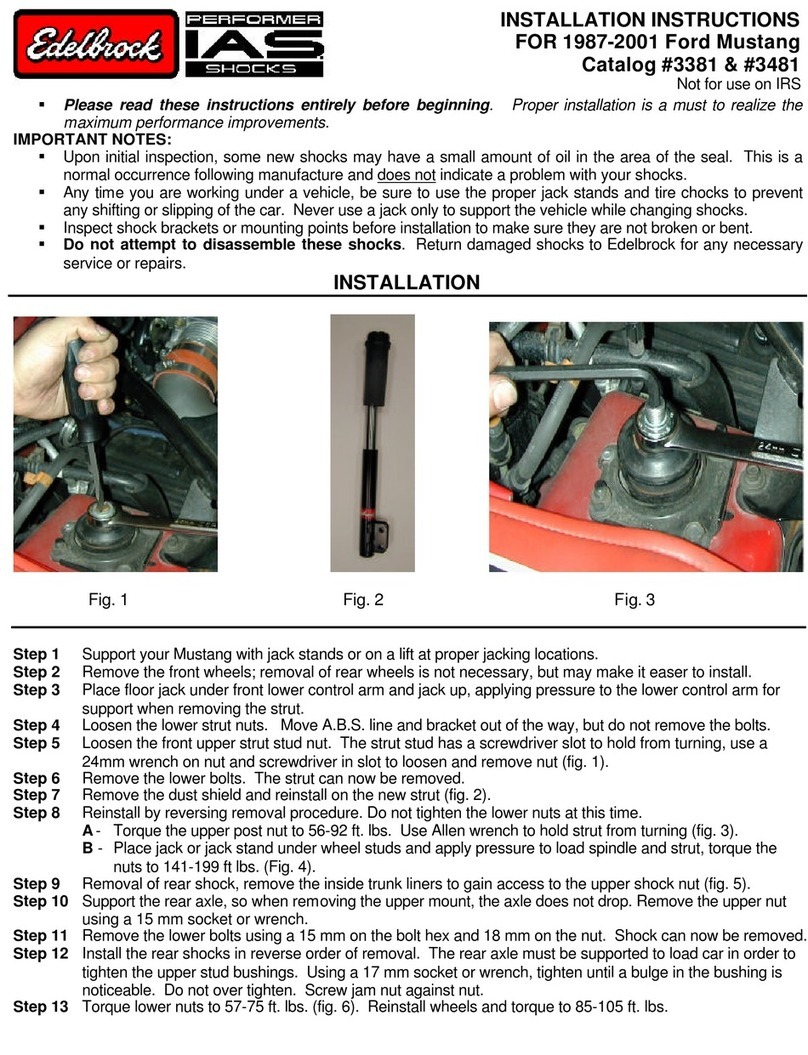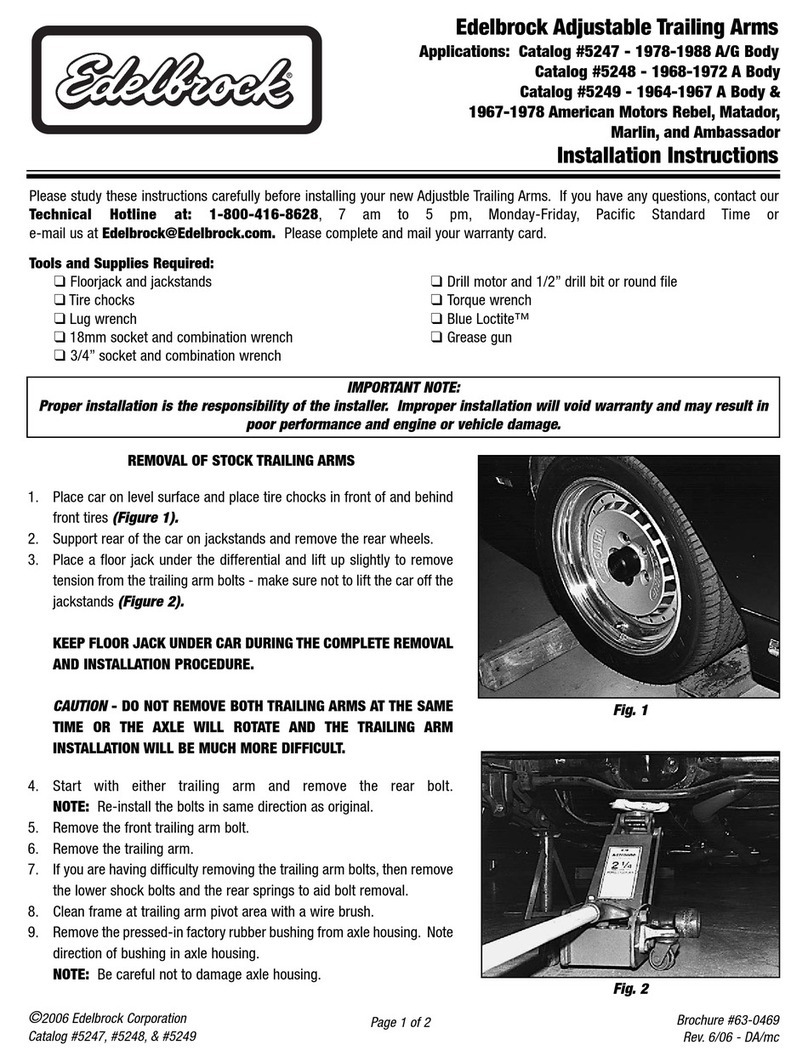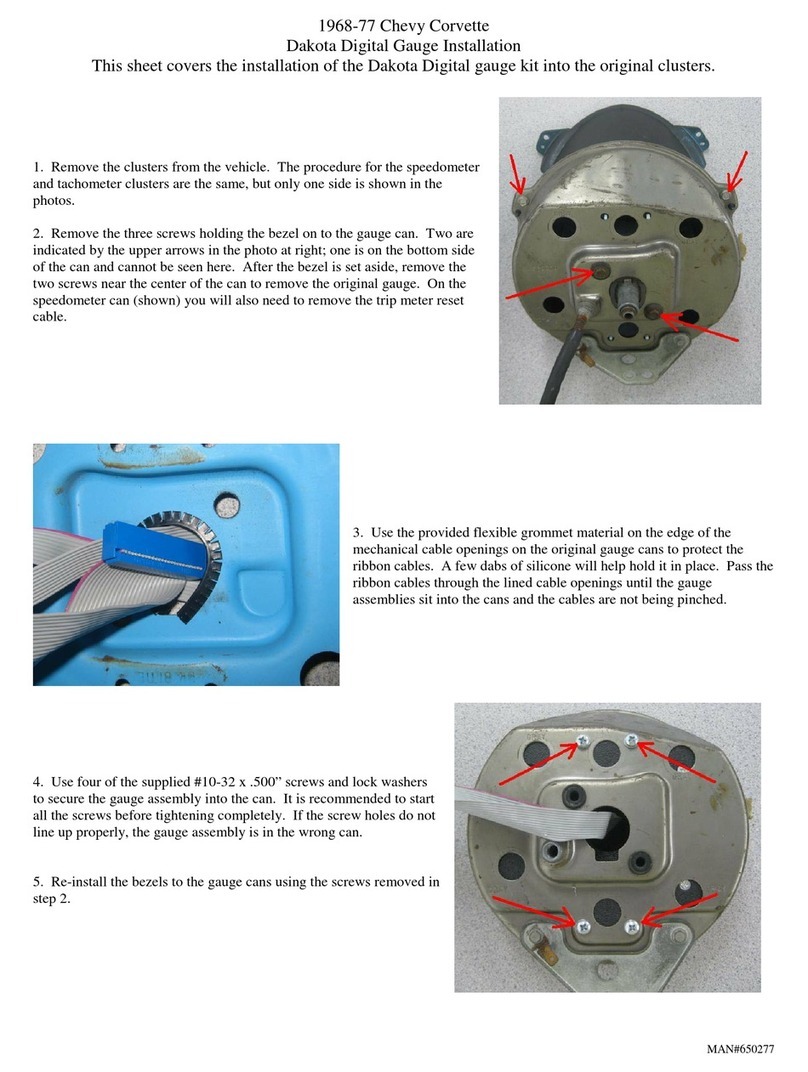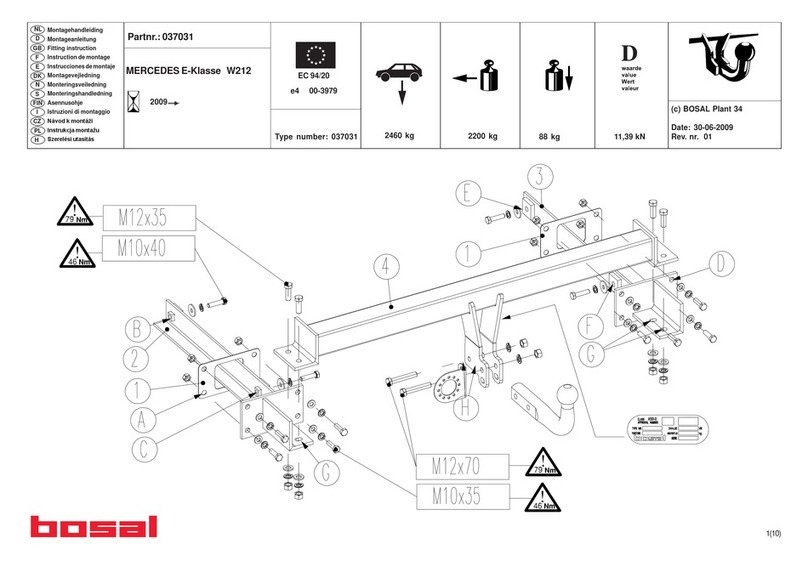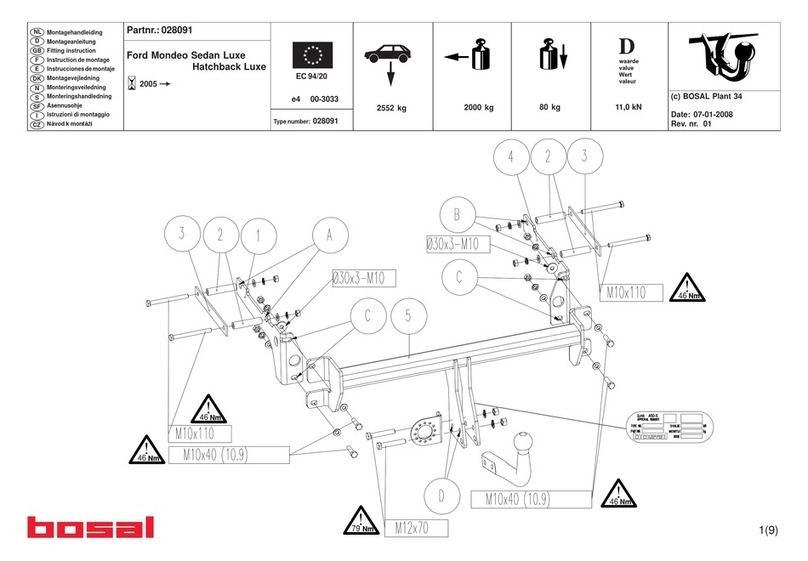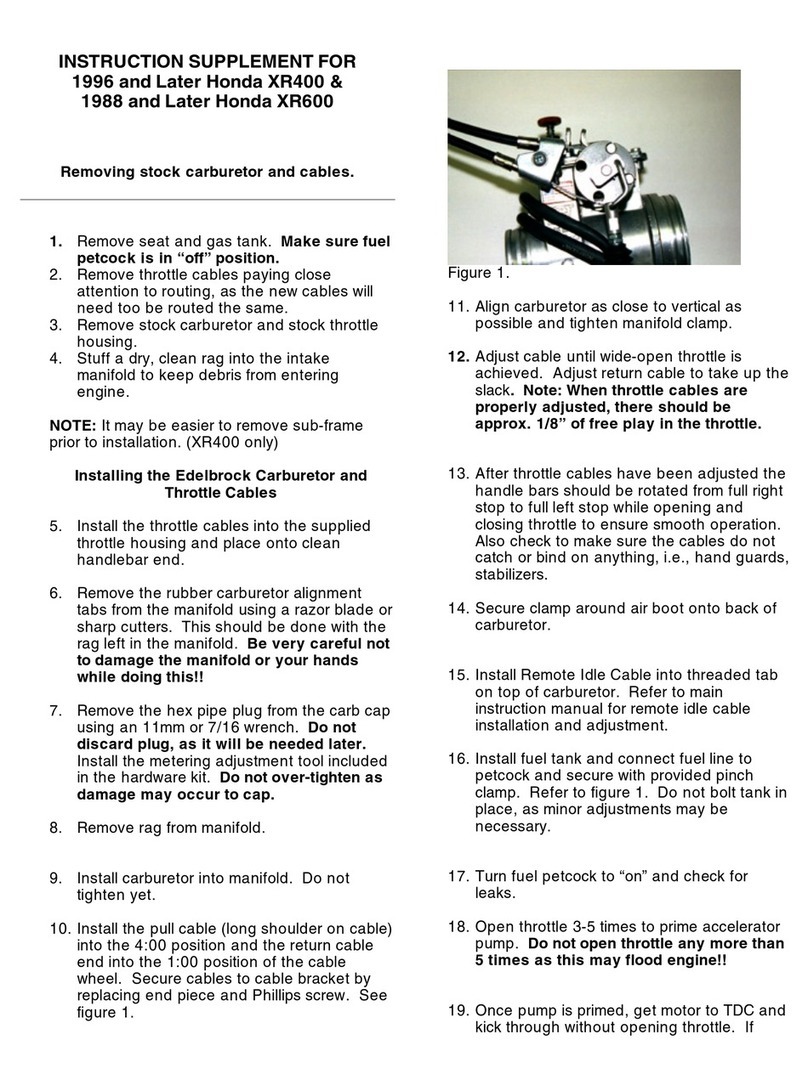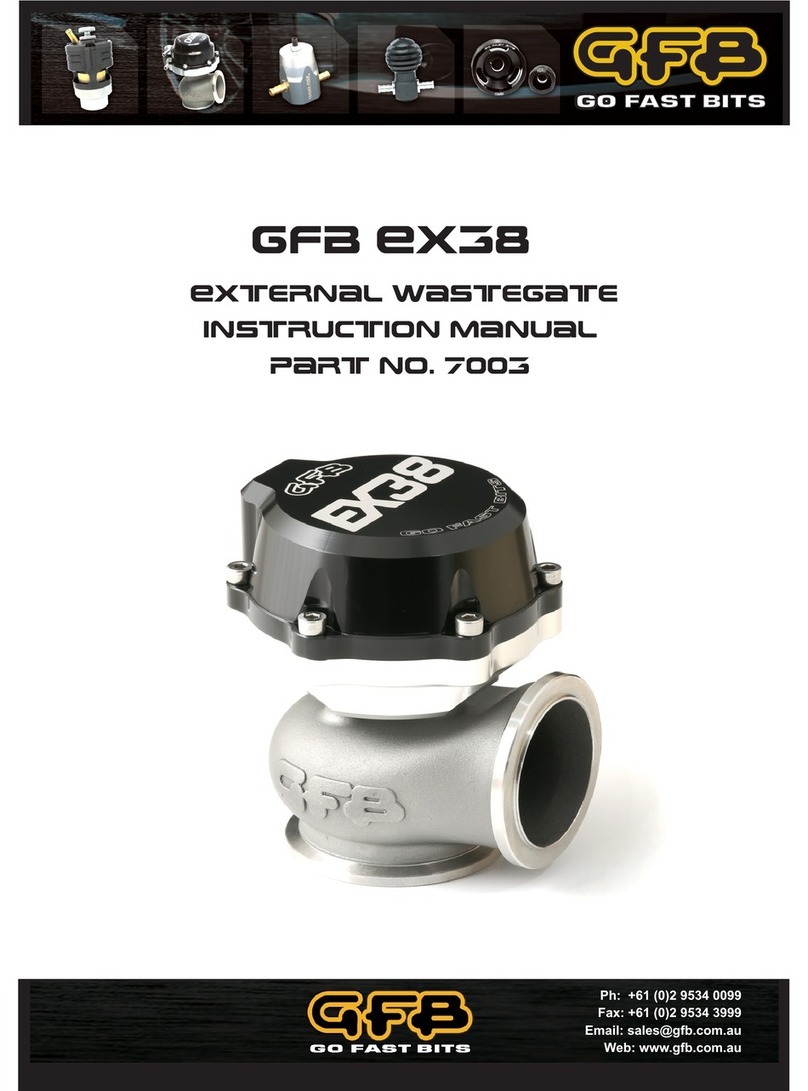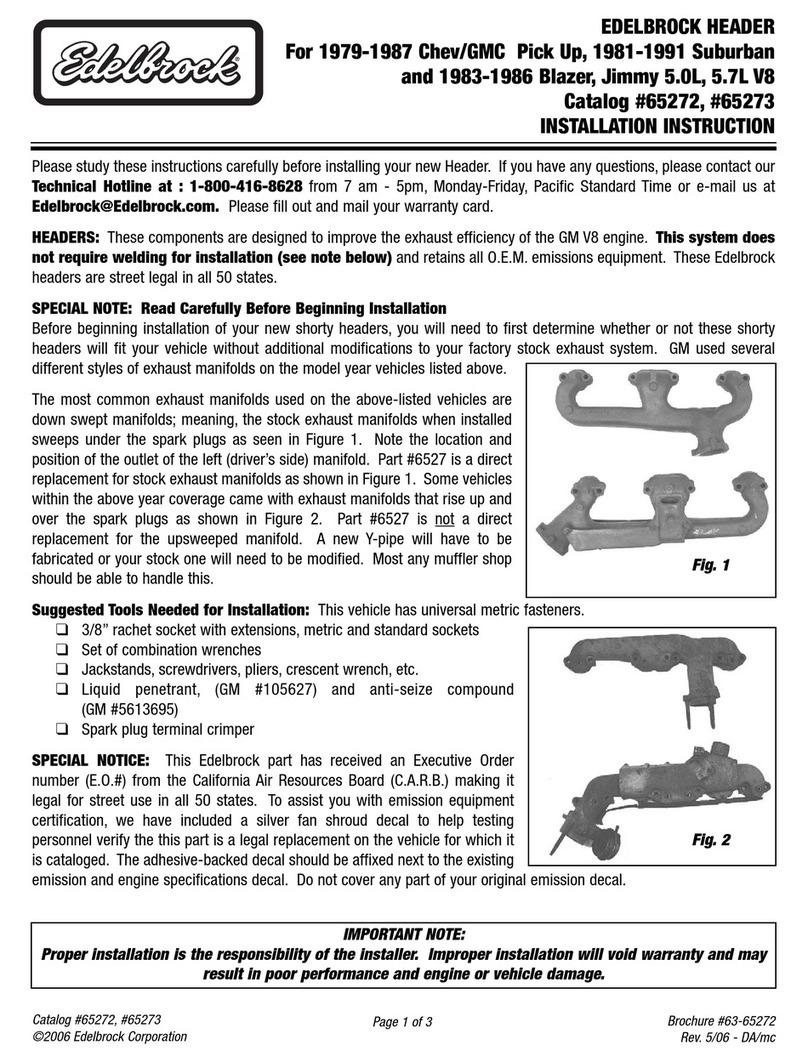
NOTE: Remove all parts from the packaging and
familiarize yourself with all the parts and tools
required. Use the parts list on the front page to verify
that all parts and hardware are present.
TOOLS REQUIRED
Impact wrench or ratchet with 3/4",
10mm, & 13mm sockets.
1/2" & 3/4" Box end wrenches
Marking tool ( pencil or permanent marker)
4" hole saw Flashlight
Drill with 1/2" bit Eye protection
Ear protection Torque wrench
Pry Bar Tape measure
Lifting Device Pilot hole Bit
Screw driver with T15 and T25 bits.
Determine cab clearance. The Turnoverball hitch is
designed so that the ball can be inverted and stored
below the surface of the truck bed while not in use.
The ball location is determined by this design feature
and the truck geometry. Measure the trailers to be
towed with this hitch to be sure that the location of the
2−5/16" ball listed in Step 11 will provide ample turning
clearance between the nose of the trailers and the cab
of the truck.
Cab clearance on short bed trucks is very limited
when towing certain trailers. Failure to ensure that
there will be adequate clearance, may result in
significant property damage, or serious injury.
PREPARE TO INSTALL
1.
Position the vehicle. Installation of the hitch requires
the installer to be under the truck bed in the area of
the rear axle. Lifting the vehicle makes this area more
accessible to the installer, and improves the
installation process.
WARNING: Lift vehicle using only equipment
designed for lifting and positioning vehicles for
service. Failure to do so may result in property
damage, serious injury, or death.
2.
Installation of the Turnoverball hitch requires several
common tools and a few specialized tools. Below is a
listing of equipment used during a typical installation.
PAGE 2 of 7
Remove and discard the heat shield above the
rear axle. A section of the exhaust heat shield will
need to be removed. Locate the bed cross member
that is directly over the axle, see Figure A2. The
section of heat shield in front of this cross member
will have to be removed. Cut along the cross member
with tin snips or another suitable tool. Make sure that
none of the heat shield is protruding past the front of
the cross member. Remove the T25 Torx screws
holding the front of the heat shield to the truck.
Discard the forward section of the heat shield when it
has been removed.
6.
Remove the spare tire. Following the vehicle
manufacturer’s instructions, remove the spare tire.
3.
Remove the spare tire heat shield. Remove the six
bolts attaching the spare tire heat shield to the frame
of the truck with a 13mm socket or wrench. Set the
heat shield aside for later re−installation.
4.
Prepare a lifting device (optional). The purpose
of the device is to safely hold the hitch in position
during part of the installation.
See Figure A1 for an example.
A simple mechanical
lifting device is available
for purchase from B&W.
5.
Lower the exhaust (Optional). To ease in the
installation of the center section, un−attach the rear
most tail pipe hangers from the frame and allow the
exhaust to hang freely. Re−attach the exhaust
brackets after installation is complete.
7.
Un−attach brake and wiring brackets.
Two brackets
are attached to the frame in locations that will interfere
with the installation. Using a 10mm socket or wrench
un−attach these brackets and allow to hang during
installation. These brackets will be re−attached when the
installation is complete. The first bracket holds two
brake lines on the inside of the driver side frame just
behind the rear axle, see Figure A3. The second
bracket holds wiring and is attached to a rectangular
frame cross member in front of and above the
differential. Loosen the connection and slide the bracket
to the driver side and unhook from frame. Allow to hang,
see Figure A4.
8.
Disconnect wiring harness. Locate the wiring
harness running along the top of the passenger side
frame rail above the rear axle. Detach the plastic
connector closest to the shock bracket from the
frame. Pull the wiring down off the top of the frame,
towards the inside, to make space for the forward
cross member to sit on top of the frame. This wiring
will be left loose during and after the installation.
9.
Figure A1.
Figure A2: View looking up at bottom of bed above axle.
CUT LINE
Figure A3. Figure A4.
HEAT SHIELD
CROSS MEMBER
BRAKE LINE BRACKET (FIRST) WIRING BRACKET (SECOND)
